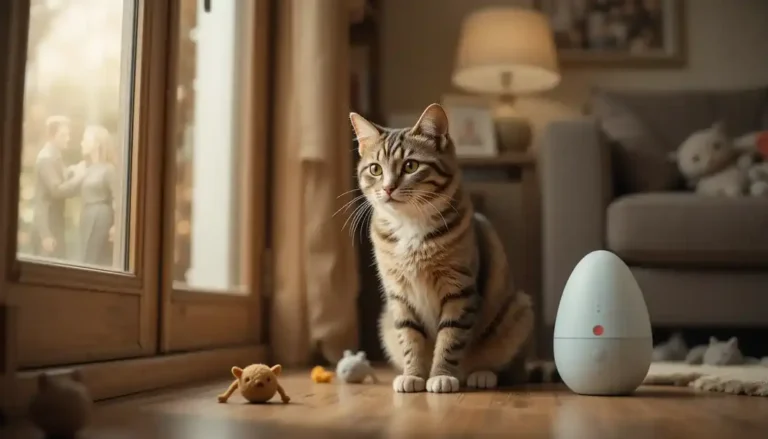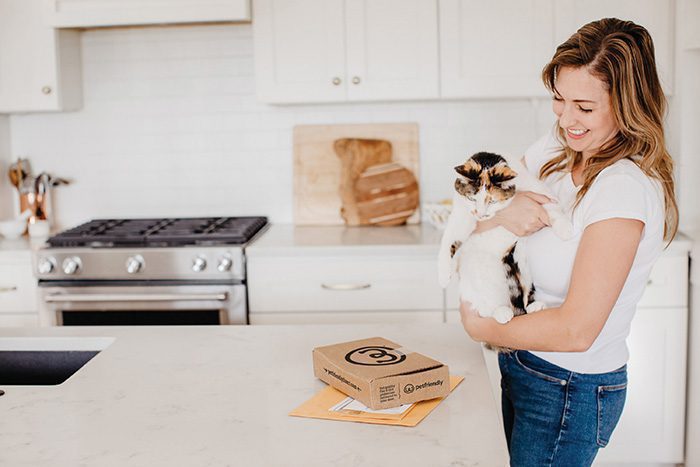Separation anxiety in cats is a stress response that appears when they are left alone, leading to loud vocalizing, destructive actions, and litter‑box problems. Recognizing the early warning signs and using enrichment, training, and veterinary support can calm your feline friend and restore household harmony.
In this guide, we’ll explore what triggers this condition, how to spot it, and step‑by‑step solutions that work.
What Is Separation Anxiety in Cats?
Separation anxiety in cats is a genuine behavioral disorder, not simply “cat‑ish” independence gone wrong. It occurs when a feline experiences intense fear or distress the moment their primary caregiver is out of sight.
- Specific to the human bond – Unlike general anxiety triggered by loud noises or new environments, this condition is tied directly to the absence of the person the cat trusts most.
- Research‑backed – A 2020 study found that more than 60 % of domestic cats develop secure attachments to their owners, disproving the myth that cats are always aloof.
- Not a medical disease – The behavior itself is not caused by illness, though medical issues (UTIs, hyperthyroidism, pain) can mimic the same signs, which is why a vet check is the first step.
The COVID‑19 pandemic highlighted the problem: many cats accustomed to 24/7 human presence became visibly upset when their owners returned to the office, underscoring how sensitive cats are to routine changes.
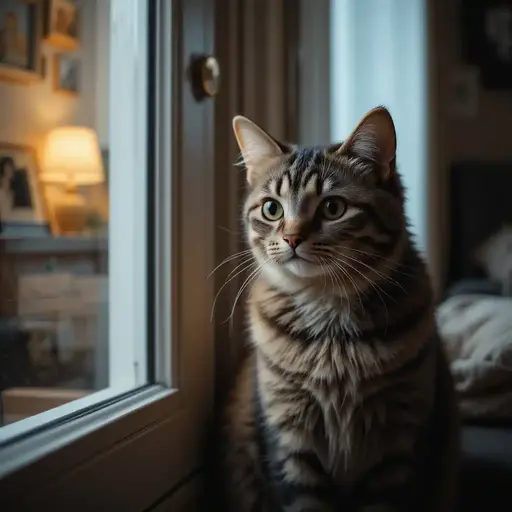
Recognizing the Signs of Separation Anxiety in Cats
Spotting separation anxiety early prevents escalation and makes treatment far easier. Below are the most reliable indicators, divided into obvious and subtle categories.
Common and Obvious Signs
- Inappropriate elimination – Urinating or defecating on the owner’s bed, clothing, or favorite furniture (up to 75 % of affected cats).
- Excessive vocalization – Persistent meowing, yowling, or crying, especially right before you leave or during your absence.
- Destructive behavior – Scratching doors, curtains, or furniture; knocking over objects; tearing up household items.
- Excessive grooming – Over‑licking that leads to bald patches or skin irritation.
- Appetite changes – Refusing food or water while you’re gone, then eating normally when you return.
Subtle or Overlooked Signs
- Hiding – Retreating to unusual, secluded spots (under beds, inside closets) only when alone.
- Vomiting – Small regurgitations shortly after you exit, without other illness signs.
- Restlessness or pacing – Agitated movement, especially during pre‑departure cues like picking up keys.
- Over‑excitement on return – Frenzied greetings that seem disproportionate to the length of your absence.
Pro tip: Always start with a veterinary exam to rule out medical causes before labeling the behavior as separation anxiety in cats.
Why Do Cats Develop Separation Anxiety?
Understanding the root causes helps you target the right solution. Most triggers involve a disruption to a cat’s sense of security or routine.
Primary Causes
- Sudden routine changes – Going back to a full‑time job, moving homes, or adding a new family member can unsettle a cat used to constant companionship.
- Early life experiences – Orphaned kittens, those weaned too early, or cats bottle‑raised may miss critical socialization windows, making separation later in life harder.
- Limited environmental stimulation – Indoor‑only cats with a single caregiver and few toys often form an over‑strong attachment.
- Over‑attachment to one person – Cats that view one household member as their sole “secure base” experience sharper distress when that person leaves.
- Past trauma – Rescue cats with histories of abandonment, neglect, or frequent re‑homing are especially vulnerable.
Risk Factors That Increase Susceptibility
| Factor | Why It Matters |
|---|---|
| Breed tendencies | Social breeds such as Siamese, Burmese, and Ragdolls tend to be more people‑oriented. |
| Life stage | Kittens and senior cats often react more intensely to changes. |
| Multiple re‑homes | Frequent moves can erode a cat’s sense of stability. |
| Single‑person households | The lone caregiver becomes the cat’s entire world. |
| Lack of enrichment | No puzzle toys, cat trees, or window perches → boredom → stronger attachment. |
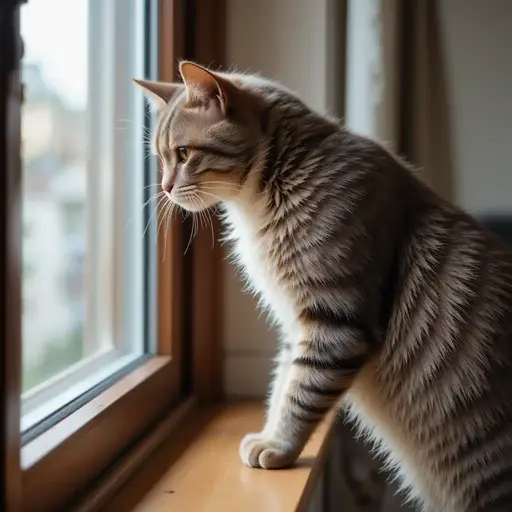
Getting a Proper Diagnosis for Separation Anxiety in Cats
A systematic approach ensures you’re treating the right problem.
- Rule out medical issues (Vet visit first) – Your vet will perform a physical exam and may order:
- Blood work (CBC, chemistry panel) – to detect hyperthyroidism, kidney disease, or anemia.
- Urinalysis – to identify urinary tract infections that cause litter‑box avoidance.
- Dental exam – because oral pain can suppress eating and increase vocalization.
- Gather a detailed behavioral history – Write down:
- Exact times the behaviors occur.
- Specific actions (meowing, scratching, elimination).
- Recent changes in the household (new work schedule, moving, new pet).
- Pet‑camera test – Set a camera where it can capture the litter box, doors, and favorite spots while you’re away. Review the footage for:
- The onset of symptoms is immediately after you leave.
- Duration and frequency of anxiety‑linked behaviors.
- Differences between “home” and “away” states.
| Diagnostic Step | What to Observe |
|---|---|
| Medical exam | Signs of pain, infection, hormonal imbalance |
| Behavioral log | Pattern of events linked to human absence |
| Video review | Direct correlation between departure and anxiety behaviors |
A diagnosis is confirmed when the problematic behaviors occur only during the owner’s absence and medical conditions have been ruled out.
Proven Solutions to Calm Separation Anxiety in Cats
Effective treatment combines environmental changes, training, and, when necessary, medication. Consistency is the secret sauce.
Environmental Enrichment (Making Alone Time Fun)
- Puzzle feeders & food‑dispensing toys – Fill with a day’s worth of kibble; the cat works for food, turning alone time into a hunting game.
- Rotating interactive toys – Battery‑operated fluttering birds or rolling balls keep curiosity alive without human input.
- Vertical spaces – Cat trees, wall‑mounted shelves, and window perches allow the cat to observe the world from a safe height.
- Scent comfort – Place an unwashed T‑shirt with your scent on their favorite resting spot.
- Feliway (synthetic feline pheromone) – Plug‑in diffusers or sprays mimic facial pheromones that signal safety. Use continuously for best effect.
- Calming background sounds – Low‑volume classical music or specially composed “cat‑calm” playlists mask startling outside noises.
Pheromone Therapy
Feliway Classic works by releasing a synthetic copy of the cat‑to‑cat facial pheromone, creating a sense of familiarity. Position a diffuser in the room where the cat spends most of its time, and replace the refill every 30 days for sustained relief.
Behavior Modification Training
Training aims to desensitize the cat to departure cues and re‑associate them with positive experiences.
1. Desensitization (Gradual Exposure)
- Step A: Perform “departure” cues (pick up keys, put on shoes) without leaving. Do this 5–10 times a day, then sit down calmly.
- Step B: Once the cat shows no reaction, open the front door for 5 seconds, then close it. Gradually extend the open‑door time.
2. Counter‑Conditioning (Positive Pairing)
- Pair each departure cue with a high‑value treat (e.g., tuna puree in a puzzle feeder). The cat learns: “When you leave, something good happens.”
3. Structured Training Schedule
| Week | Duration of Absence | Technique | Reward |
|---|---|---|---|
| 1–2 | 5–10 seconds | Desensitization + counter‑conditioning | Special treat in puzzle feeder |
| 3–4 | 30 seconds → 2 minutes | Continue cues, increase time | Same treat, calm praise |
| 5–6 | 5 minutes → 15 minutes | Add short “away” periods, monitor via camera | Puzzle feeder + brief play session |
| 7+ | 30 minutes → 2 hours | Extend to typical workday length, keep routine | Daily enrichment rotation |
If anxiety spikes at any stage, step back to the previous comfortable duration before progressing again.
Medication Options (When Needed)
Medication is a tool—not a cure—and should always be prescribed by a veterinarian after physical causes are ruled out. It works best when combined with enrichment and training.
| Medication | Class | Typical Use | Common Dosage (per vet) | Key Note |
|---|---|---|---|---|
| Fluoxetine (Reconcile, Prozac) | SSRI | Chronic anxiety, compulsive behaviors | Daily oral tablet | Takes 2–3 weeks to show effect |
| Clomipramine (Clomicalm) | Tricyclic antidepressant | Severe anxiety, obsessive grooming | Daily oral tablet | May cause mild sedation |
| Gabapentin | Neuropathic pain/ anxiety | Situational anxiety (e.g., vet visits) | Given 1–2 hours before stress event | Also relieves pain |
| Alprazolam (Xanax) | Benzodiazepine | Acute spikes of anxiety | Short‑term, as needed | Risk of dependency; not for daily use |
Safety reminder: Never give human anxiety medication to a cat. Always follow your veterinarian’s dosage guidelines and monitor for side effects (lethargy, appetite changes, gastrointestinal upset).
Professional Help
- Certified Cat Behavior Consultants (CCBC, IAABC) – Provide customized behavior plans, often via video consultations.
- Diplomates of the American College of Veterinary Behaviorists (DACVB) – Veterinarians with advanced behavior training; ideal for complex cases requiring medication and intensive therapy.
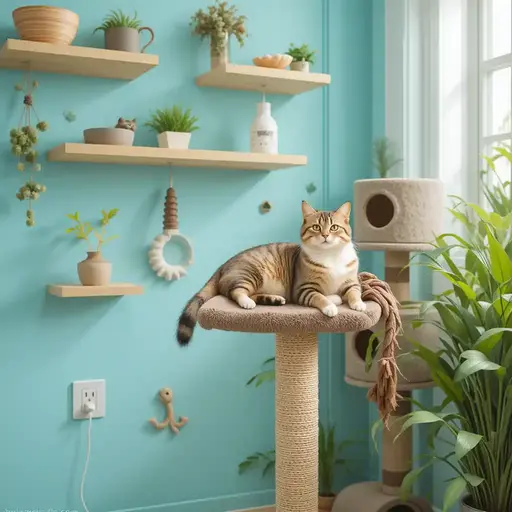
Prevention: Building a Resilient Feline from the Start
Preventing separation anxiety in cats is easier than treating it. Early habits set the tone for a confident, independent adult cat.
- Introduce alone time early – From week 2, let kittens spend 5–10 minutes in a safe room with toys while you step out briefly. Gradually increase the duration.
- Rotate caregivers – If you live with multiple people, ensure each household member spends quality time with the cat, preventing over‑attachment to one individual.
- Maintain a predictable schedule – Feed, play, and groom at the same times each day. Predictability reduces stress.
- Enrich the environment daily – Rotate puzzle feeders, add new climbing shelves, and place bird‑watching perches near windows.
- Work‑from‑home balance – Even when you’re home, schedule “cat‑alone” periods (e.g., close the office door for 30 minutes while you work). This teaches the cat that brief separations are normal.
Debunking Common Myths About Separation Anxiety in Cats
| Myth | Reality |
|---|---|
| “Cats are totally independent and never get anxious.” | Studies show most cats form strong emotional bonds; they can experience distress when separated. |
| “Only dogs suffer from separation anxiety.” | Cats display comparable signs (vocalizing, destruction, inappropriate elimination) linked specifically to human absence. |
| “My cat is just being spiteful.” | Anxiety‑driven behavior is involuntary; punishment worsens fear and damages trust. |
| “Adding another cat will solve the problem.” | A new feline companion may help some cats, but the primary attachment is usually to the human caregiver; a new cat can also increase stress. |
| “If I give my cat extra treats, the anxiety will disappear.” | Treats can be part of counter‑conditioning, but they must be paired with systematic training and environmental changes. |
Dispelling these myths paves the way for evidence‑based care.
Tools & Resources for Managing Separation Anxiety in Cats
Having the right gear makes the process smoother. Below are tried‑and‑tested products and digital aids that many cat owners swear by.
Recommended Enrichment Products
| Let’s you check in and give a treat remotely. | Product Example | Key Benefits |
|---|---|---|
| Puzzle feeder | Catit Senses 2.0 Food Maze | Encourages slow feeding and mental stimulation. |
| Interactive toy | Hexbug Nano (battery‑operated) | Moves unpredictably, keeping solo play engaging. |
| Vertical space | Go Pet Club Cat Tree (multiple levels) | Provides climbing, scratching, and hide‑away spots. |
| Pheromone diffuser | Feliway Classic plug‑in | Emits calming pheromones 24/7. |
| Camera monitor | Furbo Dog & Cat Camera (with treat dispenser) | Let’s check in and give a treat remotely. |
FAQs
How long does it take for a cat to stop showing separation anxiety?
Most cats improve within 4–8 weeks of consistent enrichment and training, but the timeline varies by severity and individual temperament.
Can I use a pet-sitter or dog walker to reduce my cat’s anxiety?
Yes—introducing a calm, familiar caregiver for short visits can help the cat learn that people other than the primary owner can be trustworthy.
Is it safe to leave a calming medication like gabapentin daily?
Gabapentin is generally safe for daily use under veterinary supervision, but it’s typically reserved for situational anxiety rather than chronic use.
My cat only meows when I’m about to leave, not after I’m gone—does that still count as separation anxiety?
Pre‑departure vocalization is a classic sign of anticipation anxiety, which often progresses to distress during the actual absence if untreated.
Will indoor/outdoor access affect my cat’s anxiety levels?
Indoor cats with limited stimulation are more prone to separation anxiety, while outdoor access can alleviate boredom but may introduce other stressors (traffic, predators). Balance indoor enrichment with safe outdoor time if possible.
Conclusion
Separation anxiety in cats is a treatable condition rooted in the deep bond they share with their owners. By first ruling out medical issues, then applying targeted enrichment, step‑by‑step behavior modification, and, when necessary, veterinary‑prescribed medication, you can dramatically reduce your cat’s distress.
Start today by adding a puzzle feeder or a calming diffuser, and practice short, low‑stress departures. Consistent, compassionate effort will help your feline feel secure—even when you’re not in the room.





